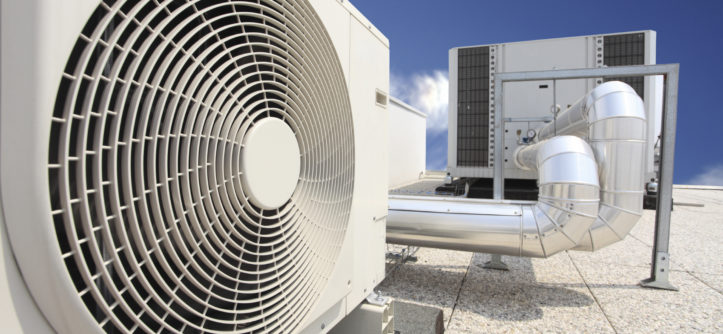In recent years there have been a number of updates to the regulations required for commercial air conditioning. These new regulations are having an impact on the HVAC industry. The most recent of these was described by some as having the greatest impact on energy-savings in history. As these new regulations have gone into effect earlier this year it will have a significant impact on how manufacturers engineer new commercial rooftop air conditioners as well as heat pumps in buildings including retail stores, some hospitals, educational facilities, and other commercial low rise buildings.
-
Table of Contents
Why Were These New Changes Implemented?
The main reason for these newest regulations was in an effort to reduce overall energy use and especially the wasted use of energy. Some estimates suggest that making the required changes will ultimately save property owners a considerable amount of money over time. Even so, they do create a number of difficult challenges for the HVAC industry as a whole.

These changes require that contractors make significant adjustments to their floor plans and their structural models so that they can meet the requirements set forth by the new regulations. Depending on the geography of the building the requirements differ. In these different geographical areas, there are different climates and typography that all have an effect on what is required to meet the regulations.
To a degree, property owners will have the cost of making these updates offset when they retrofit or replace outdated refrigeration equipment. Some designs will need to be changed so that they can take advantage of the advancements made in energy efficiency. The good news for the industry is that contractors can expect up to a 50% increase in sales for retrofitting or making necessary adjustments for commercial buildings to meet these new requirements.
-
The Two-Phase System
Not all of the planned changes were put into place this year. The changes in the regulations required from 2018 and forward represent an increase in energy efficiency of about 10%. The second phase is set to take place in 2023 and will further improve energy efficiency by as much as 30%.
If these changes are fully completed and the estimates are correct, then it could reduce commercial cooling and heating by as much as one and a half trillion kilowatt hours in the next 30 years alone. This means that the average property owner could save thousands of dollars with these updates. The standards were reached by including input from industry organizations, those who manufacture commercial air conditioners, and organizations who focus on energy efficiency.
Like any major change in an industry, this is being met with mixed feelings. Everyone understands the value of significantly improving energy efficiency for the planet and for the pocketbook. Nonetheless, property owners are skeptical that they will save more than the cost to upgrade, and ordinary hard-working individuals in the HVAC industry are concerned about their knowledge and skills of working with this new equipment and meeting the standards of the new regulations.
-
Professional HVAC Workers Must Keep Up With The Changes
The professionals within the HVAC industry who install the new equipment are the ones that are most likely to be impacted by these changes. These professionals have the responsibility of keeping up with all the latest changes but that doesn’t mean that doing so is always easy. When the changes are significant and sweeping as they are with these new regulations, some professionals fall behind.
It is also a concern for many property owners. Although the changes could represent significant savings over time it still often requires an out-of-pocket expense at the beginning. For commercial buildings, it’s also a concern that in-house HVAC technicians are able to stay up-to-date with the new standards and advanced equipment. Although these regulations have been talked about since 2015, many are finding themselves scrambling to keep up and be prepared.
-
Is The High Cost Of Updating Offset By The Lower Operating Cost?
Many manufacturers are trying to find ways to create designs that meet the demands of these new regulations without driving their cost up significantly. As an example, to create an IEER system it will require the surfaces of the heat exchanger to be larger. It also means that the scroll compressor work with a variable speed and the modulated scroll needs to be increased. The blower motors also need to have their fan speeds adjusted.
-
New HVAC Regulations On Commercial Refrigerant
The use of refrigerant in the US has new directives set by DOE HVAC. In 2017 hydrofluorocarbons were totally phased out because they emit dangerous carbon. This year the organization began limiting any substance that has a negative effect on the ozone and to help start this process they provided a purchase allowance for reclaimers and technicians.From this year on any technician that wants to get their ODS classified refrigerant certification will need an HVAC certification that includes a specialization for ODS use. Once they are certified it lasts for 3 years. Those with the right certification will have to maintain records of their disposal of 5 lbs or more.
-
What Effects Will These Changes Have On Consumers?
Because of the sweeping nature of these changes they are having some impact on both the technicians and business owners as well as homeowners. It is strongly believed, however, that these newer strict standards will significantly benefit everyone over the next few decades. Even so, these changes aren’t cheap. Because these changes require the use of new technology the prices are higher now than they will be in the future.
Despite these challenges, most are very optimistic about the value of starting these changes and putting them in place. The overall impact it’ll have on the lower use of energy and the improved impact it will have on the Earth are all considered of utmost importance. Those that are in the industry are talking with DOE about the changes that have been put into place this year and those that are expected to go into place by the year 2023. In the end, these changes will take place and the challenges will be overcome.

